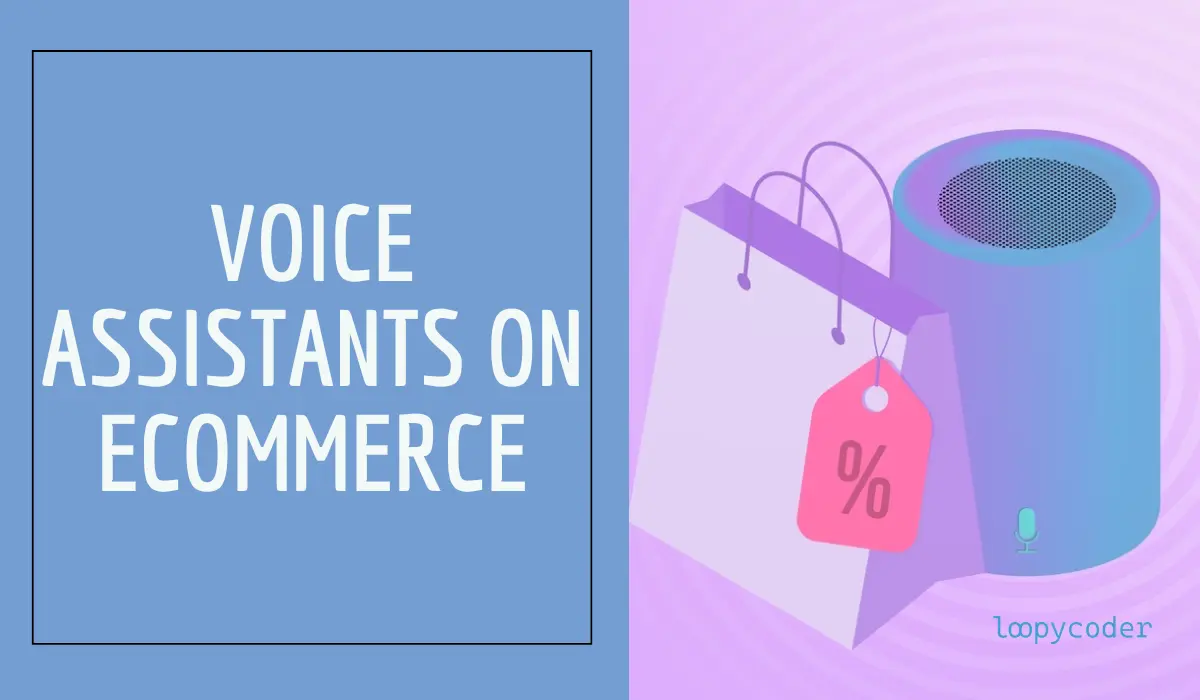As technology continues to evolve at a staggering rate, the integration of voice assistants into our daily lives has become a growing trend. This introduction of voice assistants, such as Amazon’s Alexa, Google Assistant, and Apple’s Siri, is rapidly transforming how consumers interact with businesses and, in particular, the ecommerce landscape.
According to a report by Juniper Research, it’s projected that 8 billion digital voice assistants will be in use by 2023, highlighting a sharp rise from the 2.5 billion assistants recorded in 2018. This exponential growth underscores the increasing reliance on these hands-free, voice-activated technologies for everything from asking simple questions to making purchases online.
The intersection of voice assistants on ecommerce signifies a dynamic shift in consumer behavior. As these voice-enabled devices become more sophisticated, they’re prompting a transition from traditional text-based searches to conversational commerce. This innovative approach to online shopping offers a uniquely personalized and effortless experience for consumers, further enriching their engagement with brands.
It’s essential to understand the burgeoning impact of voice assistants on ecommerce industry. Through voice-assisted shopping, businesses are discovering new avenues for increased sales, enhanced customer retention, and more accurate data collection for personalized marketing. However, with these advancements come challenges, such as issues surrounding privacy and data security.
This evolution of ecommerce through voice technology is undeniably reshaping the retail landscape. So, let’s dive into this fascinating topic, exploring the trajectory of voice assistants, their current influence on ecommerce, and the potential they hold for the future. Short, yet detailed, this overview provides an appetizing taste of the in-depth analysis to follow, blending important statistics with engaging, conversational content. Get ready to delve into the world of voice assistants and their transformative impact on ecommerce.
Evolution of Voice Assistants
Voice assistants have come a long way since their initial introduction. Looking back, we can see an astounding journey from simple voice recognition technology to today’s sophisticated, AI-powered voice assistants. Let’s embark on a historical journey to understand how this evolution has unfolded.
Our journey starts in the 1950s with Bell Laboratories’ Audrey, one of the first voice recognition systems. Limited to recognizing numbers spoken by a single voice, Audrey was a far cry from the multi-faceted assistants we know today. Despite this, it laid crucial groundwork for the field’s evolution.
The following decades saw incremental advancements. In the 1960s, IBM’s Shoebox could recognize 16 English words, a notable leap forward. Yet, it was the 1990s that brought significant changes, as Dragon Dictate introduced continuous speech recognition, allowing for more natural conversation.
Fast-forward to 2011, and Apple’s Siri made its debut. Siri revolutionized the market by providing a voice assistant that could answer questions, send messages, and set reminders, all integrated within a smartphone. Shortly after, Google launched Google Now (now known as Google Assistant), taking a similar path.
The introduction of Amazon’s Alexa in 2014 added a new dimension to the mix: smart home compatibility. Alexa moved beyond smartphones, ushering in a wave of smart speakers and home automation, reinforcing the practicality and accessibility of voice assistants in everyday life.
In a short period, we’ve seen voice assistants evolve from simple, speech-recognition tools to powerful, AI-driven software that can answer queries, complete tasks, and even shop online. This extraordinary journey has significantly impacted various sectors, including ecommerce, altering how consumers shop and interact with businesses.
The Current State of Voice Assistants on Ecommerce
Voice-assisted commerce is no longer a futuristic concept; it’s a reality rapidly gaining momentum. As we delve into the current state of this innovation, we see an increasing number of households relying on voice assistants for their shopping needs.
According to eMarketer, it’s predicted that over one-third of the U.S. population will use a voice assistant monthly by the end of 2023, demonstrating a significant uptake of this technology. It’s not just limited to asking questions or setting reminders; consumers are actively using voice assistants to make purchases, track deliveries, and even leave reviews, pushing ecommerce into a new era of voice-activated convenience.
Brands are swiftly recognizing the potential of this trend. Companies such as Amazon, Walmart, and Domino’s Pizza are leading the way in voice-assisted commerce. For instance, Domino’s Pizza’s customers can order their favorite pizza hands-free through Alexa, providing an enhanced customer experience.
The current state of voice-assisted commerce is also revolutionizing the way data is collected and used. Voice assistants capture vast amounts of information regarding consumer behavior and preferences. This data provides insights that businesses use to personalize marketing efforts, offering targeted product recommendations and promotions, thereby fueling further ecommerce growth.
Despite the widespread adoption and the undeniable convenience voice assistants provide, challenges persist. Privacy concerns are one of the main hurdles faced by voice-assisted commerce. With the assistants ‘listening in’ for commands, questions arise about how this data is stored, used, and protected.
Impact of Voice Assistants on Ecommerce
As we continue our exploration, let’s examine the profound impact voice assistants are having on the ecommerce industry. The incorporation of this technology into our shopping experiences is reshaping consumer behavior, influencing sales, and modifying how businesses approach customer engagement and data collection.
At the heart of this transformation is the shift in consumer behavior. Voice assistants are steering us away from traditional text-based searches towards voice-based interactions. According to a study by OC&C Strategy Consultants, voice shopping is set to jump to $40 billion in 2022, up from about $2 billion across the U.S. and the U.K. in 2018. This transition illustrates the growing comfort and trust consumers have with using voice assistants to make purchases, from grocery shopping to ordering household items.
Next, let’s focus on the effect on sales and revenue. Businesses that leverage voice technology are seeing an increase in overall sales. By enabling voice-based purchases, companies open up a new, convenient sales channel that caters to busy customers. This ease of use can also trigger impulse purchases, contributing to an uptick in sales.
Customer engagement and retention are also feeling the impact of voice assistants. Personalized, interactive conversations facilitated by these assistants enhance customer experience, fostering deeper connections with brands. Such seamless interactions are more likely to breed brand loyalty and increase customer retention.
Furthermore, voice assistants are transforming how businesses collect and utilize data. The conversational data harvested allows companies to gain a deeper understanding of their customers’ needs and preferences. Armed with this knowledge, businesses can tailor their marketing strategies, promoting relevant products and offering targeted deals, thereby boosting customer engagement and sales.
However, amidst these positive impacts, voice assistants bring about significant implications on privacy and security. The fine balance between personalization and privacy is an ongoing challenge, with users often concerned about how their data is stored and used.
Future of Voice Assistants in Ecommerce
As we pivot to the future, the prospects for voice assistants in ecommerce appear both exciting and vast. Predicted trends and technological advancements point to a landscape where voice-assisted commerce will become even more prevalent. But what exactly might this future look like? Let’s delve into the possibilities.
Forecasts suggest the adoption of voice-assisted commerce will continue to rise. As per a report from Voicebot.ai, nearly 90 million U.S. adults were using smart speakers for various tasks as of January 2023, indicating growing comfort with this technology. The trend suggests this figure will only increase, leading to an even greater integration of voice assistants in our shopping experiences.
Technology will likely continue to evolve and enrich voice-assisted shopping. With advancements in AI, we can expect voice assistants to understand and respond more accurately to complex commands and queries. Such improvements will likely lead to a more streamlined and personalized shopping experience, further boosting customer satisfaction and loyalty.
Despite the optimistic outlook, challenges remain on the horizon. For voice-assisted commerce to reach its full potential, businesses will need to address and overcome issues related to privacy and data security. Striking the right balance between personalization and privacy will be key to maintaining customer trust and encouraging further adoption.
Moreover, businesses will need to adapt their strategies to thrive in this voice-activated era. This may involve optimizing their online presence for voice search, developing voice-based marketing strategies, and learning to harness the unique conversational data provided by voice interactions.
Conclusion
Are you ready to embrace this voice-activated future? Whether you’re a business seeking to leverage the power of voice technology or a consumer eager to simplify your shopping experience, it’s time to engage with this transformation. Stay informed, remain adaptable, and get ready to voice your way into the future of ecommerce!

